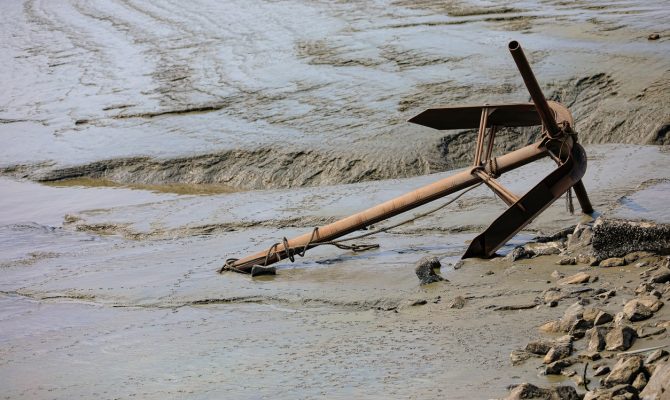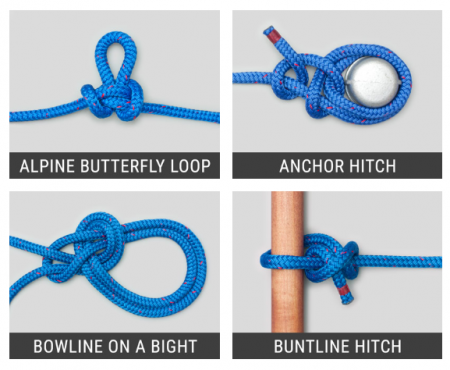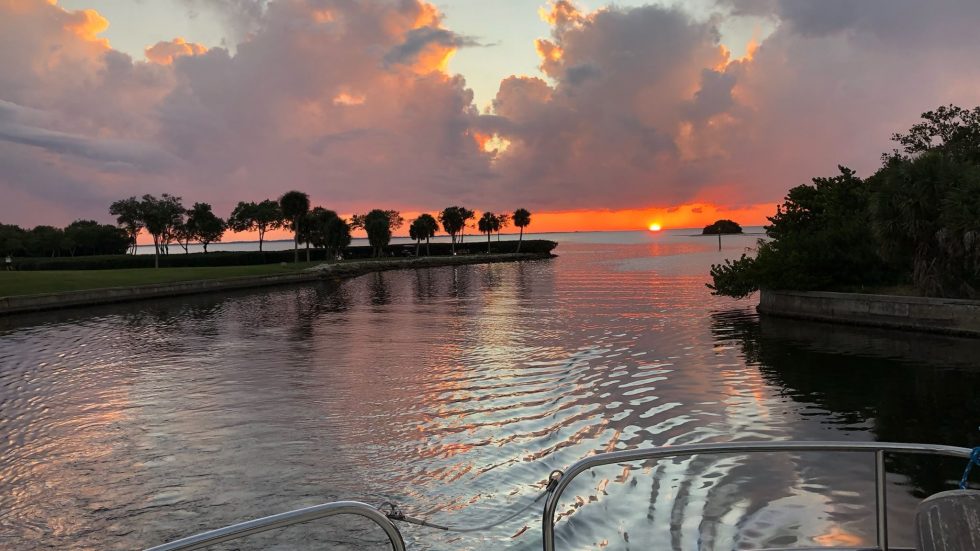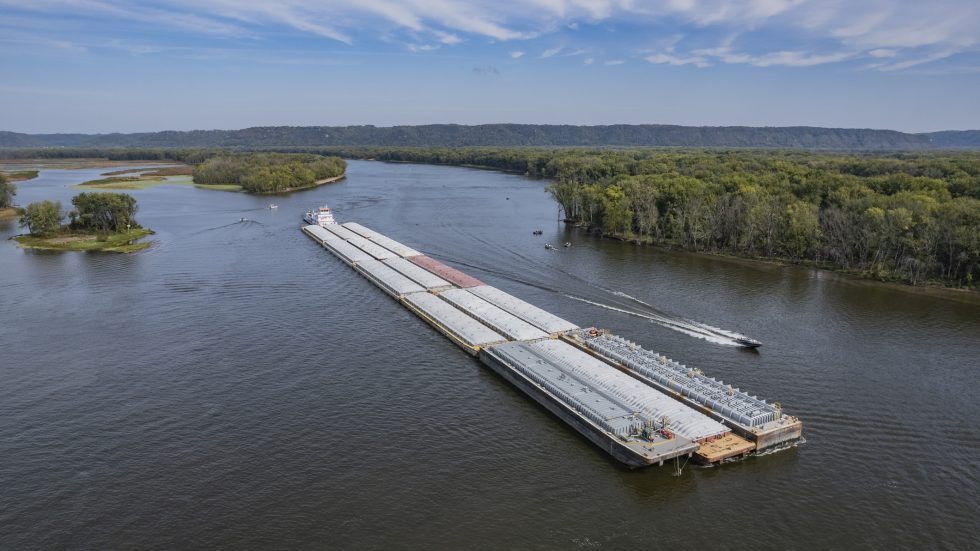The inland waterways are full of scenic points to anchor for a short period of time or as an overnight stay. There are some important steps to follow when anchoring your boat along these river systems.
Short-term Anchoring
To anchor for a few hours, it is best to use a light mushroom anchor about a half-pound-per-foot of boat length on a 3/8-inch nylon anchor line about 50 feet long. Lower your anchor to the bottom after you stop, then let out a length of line equal to about five to seven times the depth of the water as your boat drifts back. Even though you may feel secure, never take your eyes off the river — watching for floating debris and waves from passing tows.
Anchoring overnight on the river channel is not recommended, as any spot on the river that will allow for enough room for the boat to swing on the line will probably put it in the way of a tow. If you do anchor, even for a short time, do so in an area you think is out of the channel. If a Towboat Captain turns on his or her searchlight and keeps it shining on your boat, you have anchored in a position where you should not be. It is mandatory to move out of the way as fast as possible.
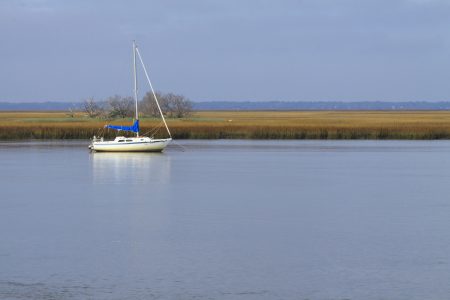
Sailboat anchored in a river
Off Channel Overnight Beach Anchoring
When looking for a spot to have an overnight stay, that is not at a marina, it is best to beach your boat at one of the many off-channel beaches along the rivers. Check the local DOC regulations, but camping on these beaches is usually free and can sometimes allow for up to 14 days of occupation.
Be aware of rocks or snags as you approach the shore. Enter at bare steerageway with the prop disengaged. Once the bow touches, apply enough power to set your boat firmly on the bank. To secure the boat, attach a line from each amidships or quarter (astern) cleat to a tree on shore at about a 45-degree angle. This will wedge you in place.
You may also want to set out a stern anchor to keep the waves of passing tows and other cruisers from driving you too far up on the bank to get off. If you are in a runabout and beach bow-first, be aware that waves from passing tows can come over your transom and possibly flood your boat.

Riverbank along the Mississippi River
Know Your Knots
Beyond the universal anchor hitch, it is never a bad time to freshen up on your knot knowledge. Knowing how to secure and detach your boat, in a variety of ways, is imperative on the inland waterways — where conditions can literally change overnight. Having a handy video tutorial of the many different techniques is a good way to acquire new skill-sets and maintain your current knowledge. The video tutorials from Animated Knots provide an excellent, easy to use platform for practicing different techniques.

